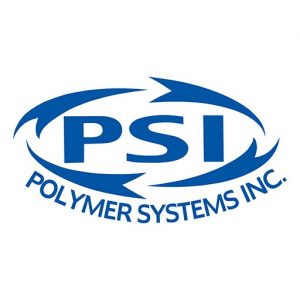Backflush Screen Changer – FAQ

CONTROL
How does the screen changer know when to initiate a backflush cycle?
The PLC uses a clean screen pressure setpoint and a value +/- 600 PSI higher to establish baseline settings. When the upstream pressure transmitter reads the high-pressure setpoint, the backflush cycle initiates, and the PLC cycles all four screens in sequence through the backflush operation.
How do I know when to perform a screen change?
There are two ways:
As the number of backflushes increases, it is typical for the clean screen pressure value to drift up due to a buildup of occlusions in the screen pack that will not dislodge under back pressure. When this happens, the operating pressure window slowly grows smaller, and the backflush cycle frequency increases. If the time between cycles drops to a preset value, an alarm is triggered, calling the operator to perform a screen change on all four positions.
Alternatively, the PLC has a setpoint that specifies the number of backflush cycles that can be performed before calling for a screen change. In this case, if the backflush cycle is highly efficient and the change in frequency does not decrease to the point of triggering a screen change alarm, screens can fatigue over time. Experimentation can determine the maximum acceptable number of cycles.
Where should I set my backflush initiation pressure set point?
PSI typically recommends setting the backflush initiation pressure somewhere around 600 PSI higher than the clean screen starting pressure, depending on what pressures the line is running at and what the downstream pressure is or is expected to be. Make sure that the delta pressure for the breaker plate does not exceed 1,500 PSI.
Is a Downstream Pressure Transducer required to operate the Backflush Screen Changer Auto-Function or otherwise to trigger a screen change?
The Auto function does not require a downstream pressure transducer. Backflush is triggered by changes in the upstream pressure only.
- Downstream pressure indication is optional to view delta pressure on the system and/or alarm to a setpoint. It is important to know roughly what the downstream pressure is to set the proper backflush pressure set point and inlet pressure alarms. If this is not available, start with the clean screen head pressure as the lower limit of the Auto-Function setpoint and use the setting that screen changes would normally be made at for the upper setpoint.
It doesn’t look like there is a downstream pressure instrument on this unit.
The PLC has the ability to tie in a downstream pressure transmitter, but this is not supplied as a standard and must be specified as part of an order.
FAULTS
Multiple faults are constantly present on the screen changer control panel.
Fault Codes IO MODULE #6 MISSING (FATAL) IO MODULE #5 MISSING (FATAL) IO MODULE #4 MISSING (FATAL) EMERGENCY STOP RESET REQUIRED (FATAL)
This can occur after the E-Stop has been activated. The power to the I/O modules comes from the “SCD” (Safe DC Power), so when an e-stop is activated and the e-stop relay has not been reset, these alarms will show. Clear the e-stop and press the blue reset button at the front of the panel to re-engage the e-stop relay and clear the alarms.
CROSSBOLT MOVEMENT
Jog In moves the bolts out away from the hydraulic cylinder. I can’t get the bottom bolt to go online. I push Auto Home, and the bolt goes to the C position and stops.
Sounds like the hydraulic hoses are connected backward, or the “Extend/Retract wiring between the PLC panel and the HPU is incorrect. Most likely, the hoses are backward. Either way, switching either one of these will fix it. Make sure top/bottom bolt extend will extend away from the hydraulic cylinder and retract will retract.
When you go to the manual screen and Jog In or Jog Out, does it move in the correct direction? Jog Out is cylinder extend, Jog In is retract. No matter what, you should be able to get it online by jogging the bottom bolt in or out to get it close to the home/online position.
Stuck bolt: The crossbolt is stuck in place and will not move.
Check the Hydraulic Power Unit (HPU). If no there is pressure, check the fluid level (sight glass), check that the pump is operating, and check the directional coils for illumination.
The crossbolt may need cleaning, or there may be damage to the housing or crossbolt impinging movement. If the hydraulic power unit pressure is reading over 1000 PSI and the crossbolt is not moving, refer to:
Lubrication. What lubricant should be used for the crossbolts?
The recommended screen bolt lubricant is G-N Metal Assembly Spray, a molybdenum disulfide lubricant manufactured by Dow Corning Corporation. Only Molybdenum disulfide spray lubricant with a thermal stability of 450° C should be used for lubrication.
Never use organic or silicone-based lubricants on the screen bolts. These materials will cause the screen bolts to seize in the housing.
